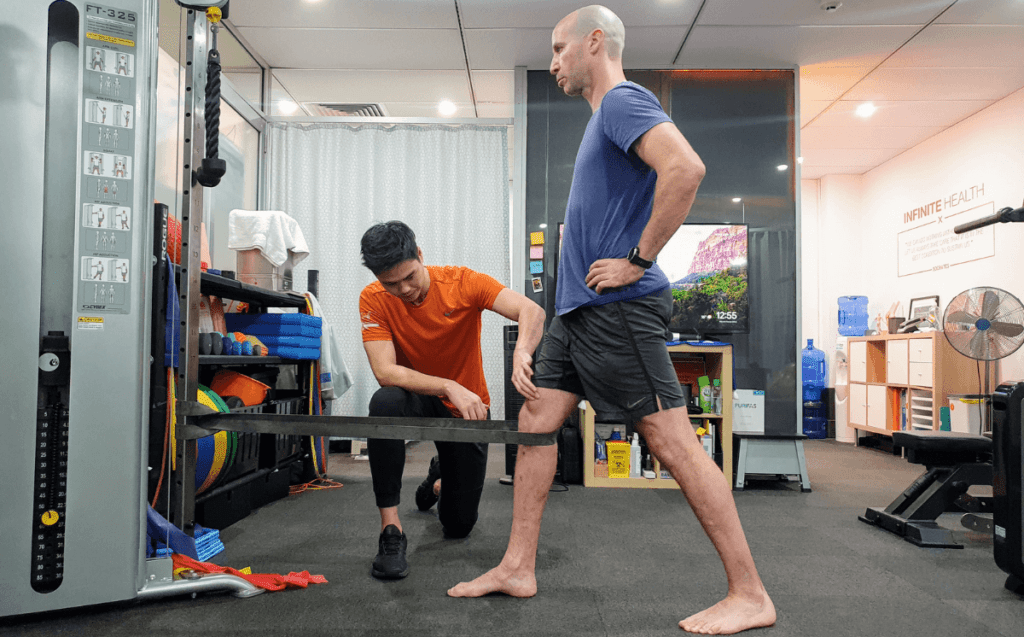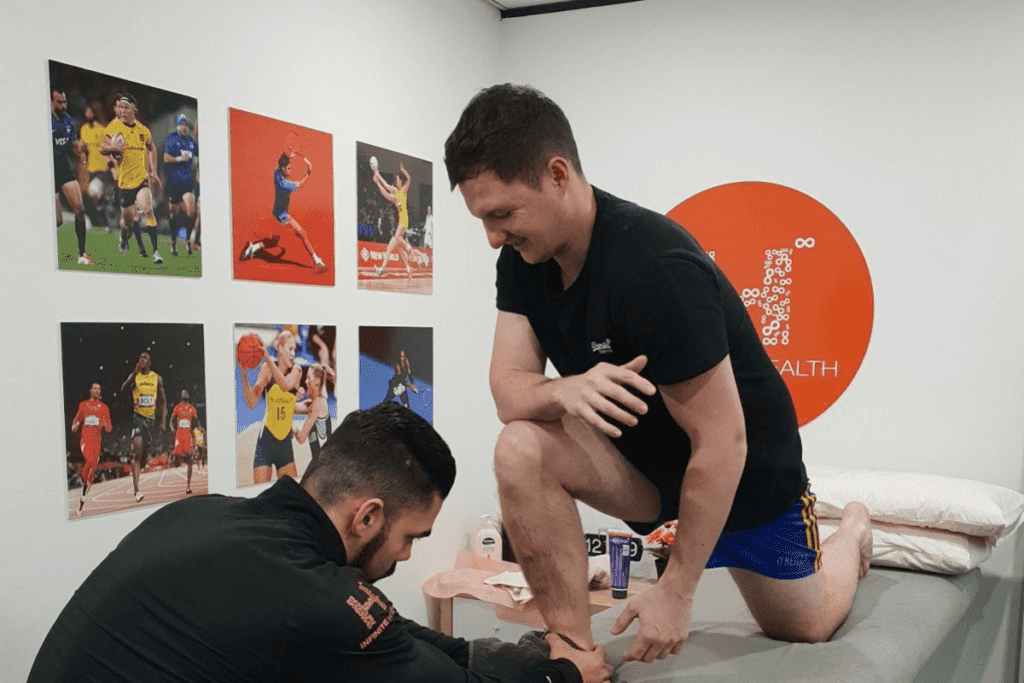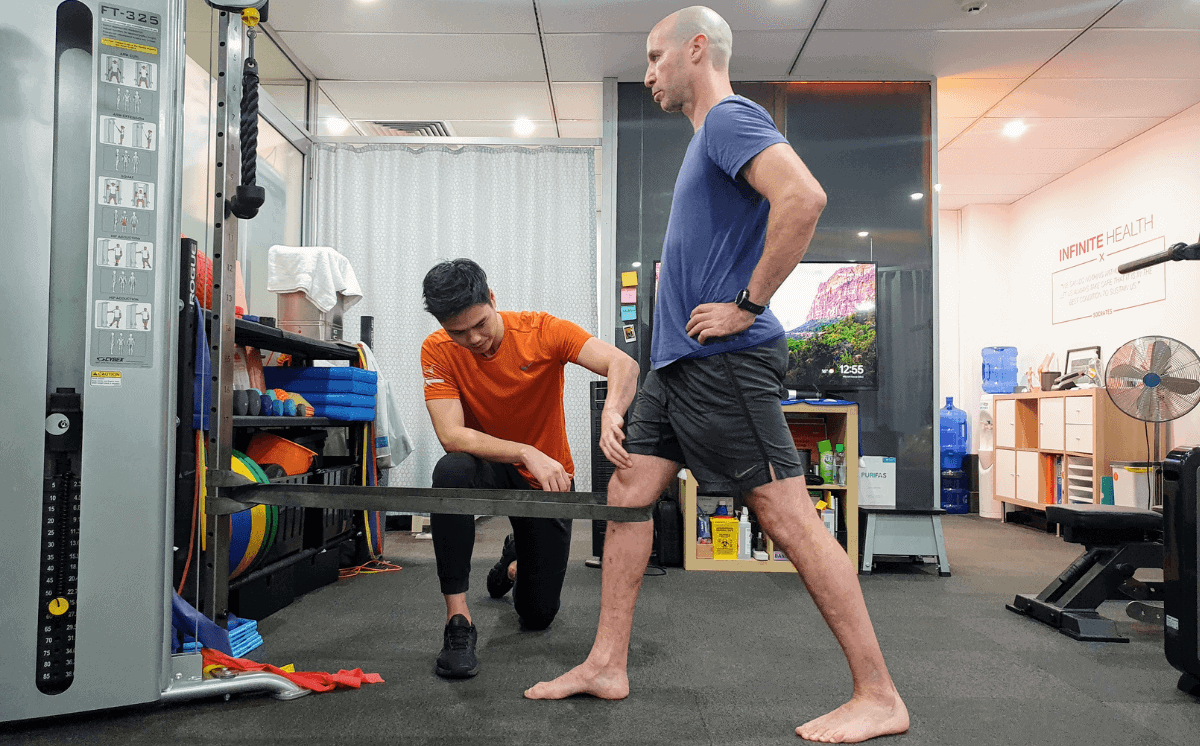
I spoke to Kevin Jensen and John Lee from Infinite Health for some expert advice about taekwondo injuries and treatments.
Kevin is a massage therapist who has worked with the Argentine National Taekwondo Team and competed himself in World Youth Taekwondo championships in Canada, the Costa Rica Open and 2x Pan-American championships in Mexico.
John Lee is a qualified physical therapist with 10 years of experience treating sports injuries.
Injury 1: Ankle sprain
Why ankle sprains typically occur:
One of the main ways to score points in taekwondo is kicking. This increases the possibility of ankle sprain of the foot that remains on the ground, in addition to the fact that a turn is usually made on the supported foot since certain kicks have simultaneous movements of the body.
How to treat ankle sprains :
- Depending on whether the injury or possible injury occurs during a competition or training, the actions that we are going to do are different.
- If the injury occurs during a competition, the stability of the ankle and the degree of sprain must be evaluated to determine whether it is possible for the athlete to continue or not.
- If the injury occurs during training or once the competition is over, after its evaluation it is important to apply the PRICE protocol (protection, rest, ice, compression and elevation) and start physiotherapy as soon as possible and if necessary work together with the Massage therapist to reduce the tightness in the leg muscles.
Injury 2: Hamstring strain
Why hamstring strains typically occur: Hamstring injuries frequently occur in taekwondo because of the explosive movement patterns, and can cause lengthy downtime.
As the dynamic kick is one of the most used techniques during competition or training, it requires an explosive movement and this increases the possibility of suffering a muscle tear.
It is important during competition not to let the muscles cool down between rounds, as this increases the risk of injury. Also ensure you keep leg muscles warm between fights by correctly warming up and activating your muscles.
How to treat hamstring strains:
- Like other sports injuries, the PRICE protocol is important to reduce the
degree of muscle injury. - If your therapist determines that the muscle injury is considerable, it is
important to obtain an ultrasound to see the degree of muscle rupture that
occurred. - Starting physical therapy quickly is important to avoid muscle adhesions that
can lead to new muscle tears or weakness in the future. - At the same time, working with a massage therapist to work the different
muscles of the leg or different areas of the hamstring is important to reduce
the tightness in the area surrounding the tear.

Injury 3: Contusions (bruises)
Contusions are classified as:
- Superficial contusion: These are caused by minor trauma and are characterized by
pain, increased volume, and partial functional impotence. - Deep contusion: It is characterized because the trauma originates deep injuries,
either due to the intensity of the trauma, the state of the traumatized tissues or the
location; in this case, the increase in volume and the presence of bruises can be
caused by the rupture not only of small blood vessels, but also of the muscle mass.
Why injury typically occurs:
These are produced by various impacts, where gravity depends for the most part on the intensity and location of the blow. Being a contact sport where you try to hit different areas of the body to get as many points as possible, the risk of contusions is higher than in other disciplines.
Note: To avoid contusions, the correct use of safety gear (instep, forearm, tibia, helmet and mouth guard) is important to train and compete.
How to treat contusions (bruises):
- Relieve pain using a spray product (cold spray), analgesic or
anti-inflammatory cream. - Direct application of ice or cold compresses.
- Apply a compression bandage, but it should not be maintained for a long time
(about 20 minutes, if necessary, after that time the bandage is loosened and 5
minutes later it is put on again). - After the above, apply an anti-inflammatory and analgesic cream if there is no
lesion on the skin.
It is important that the injury is controlled by the doctor or physical therapist to
monitor the healing of the tissue and avoid the impact of the area until it is recovered

